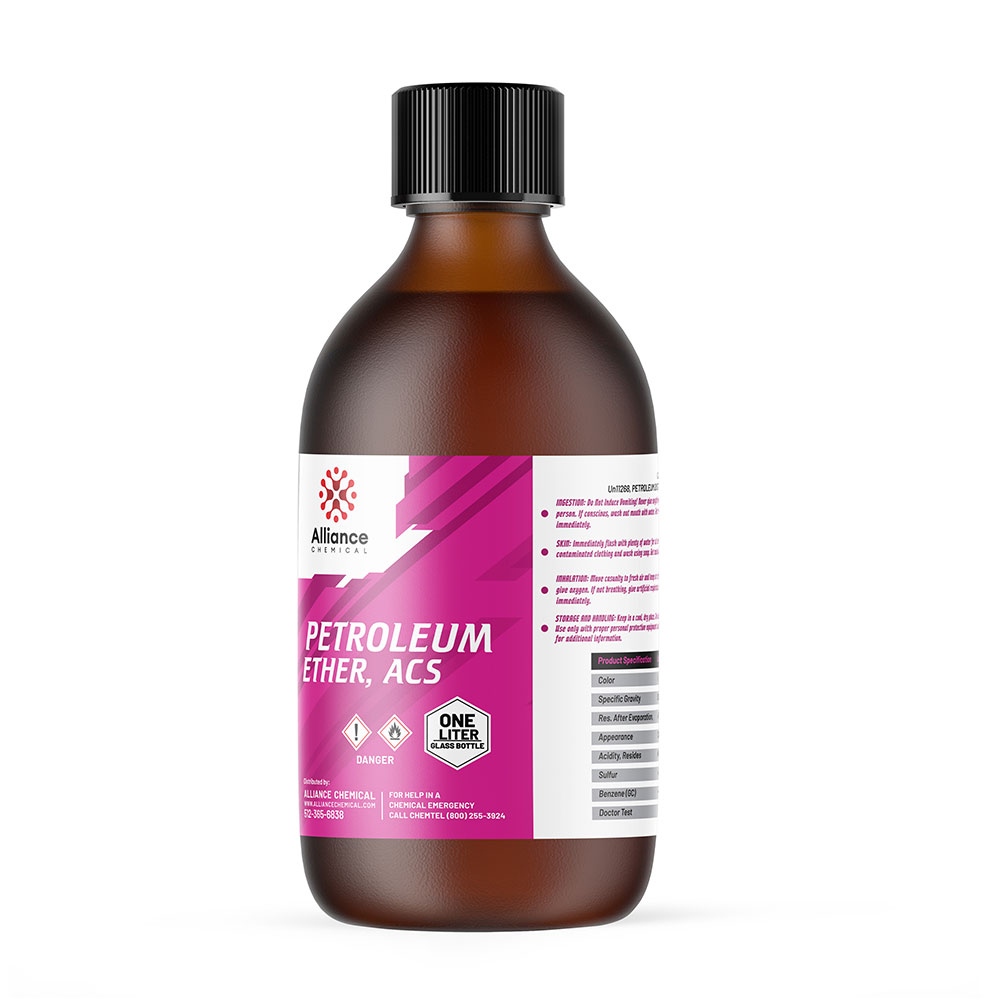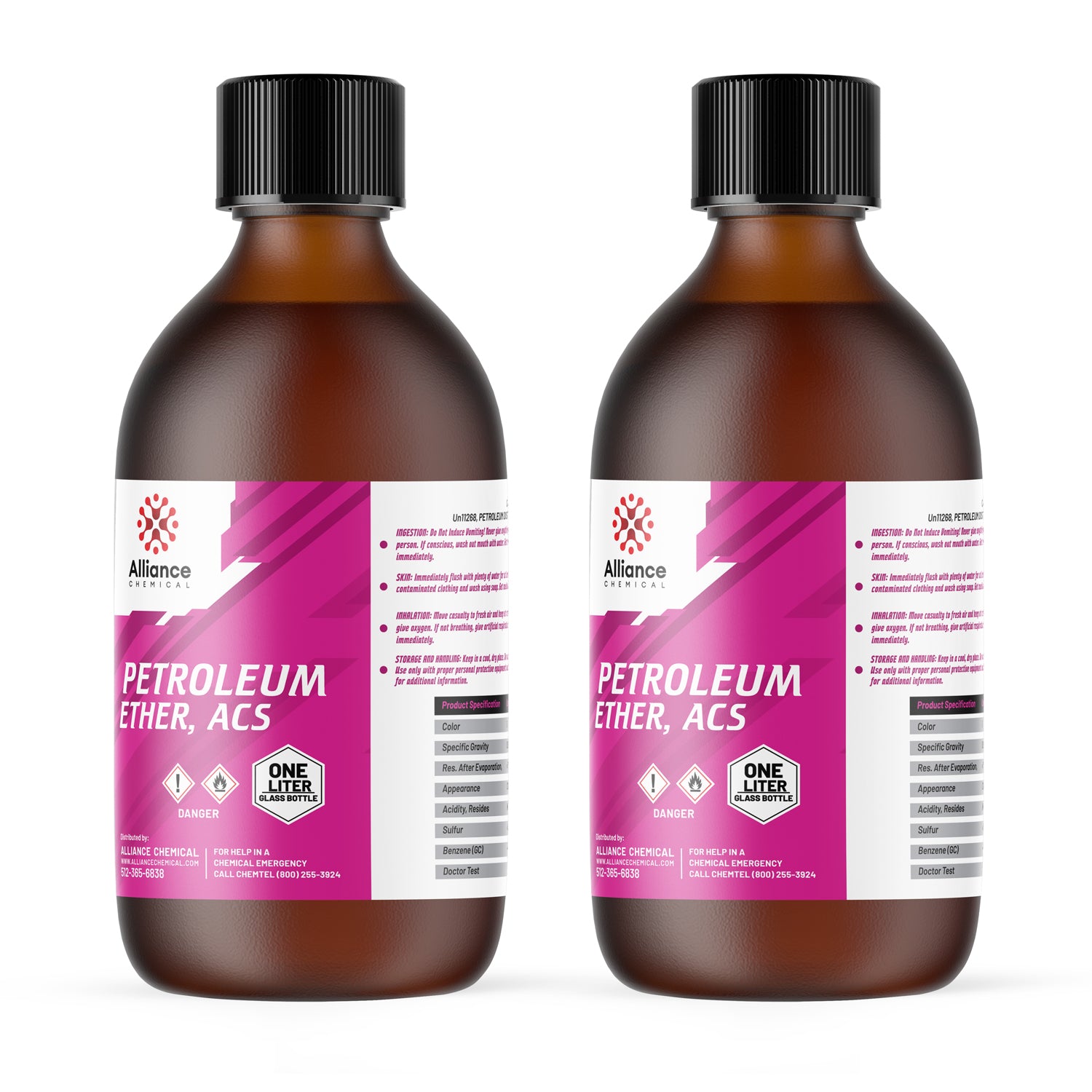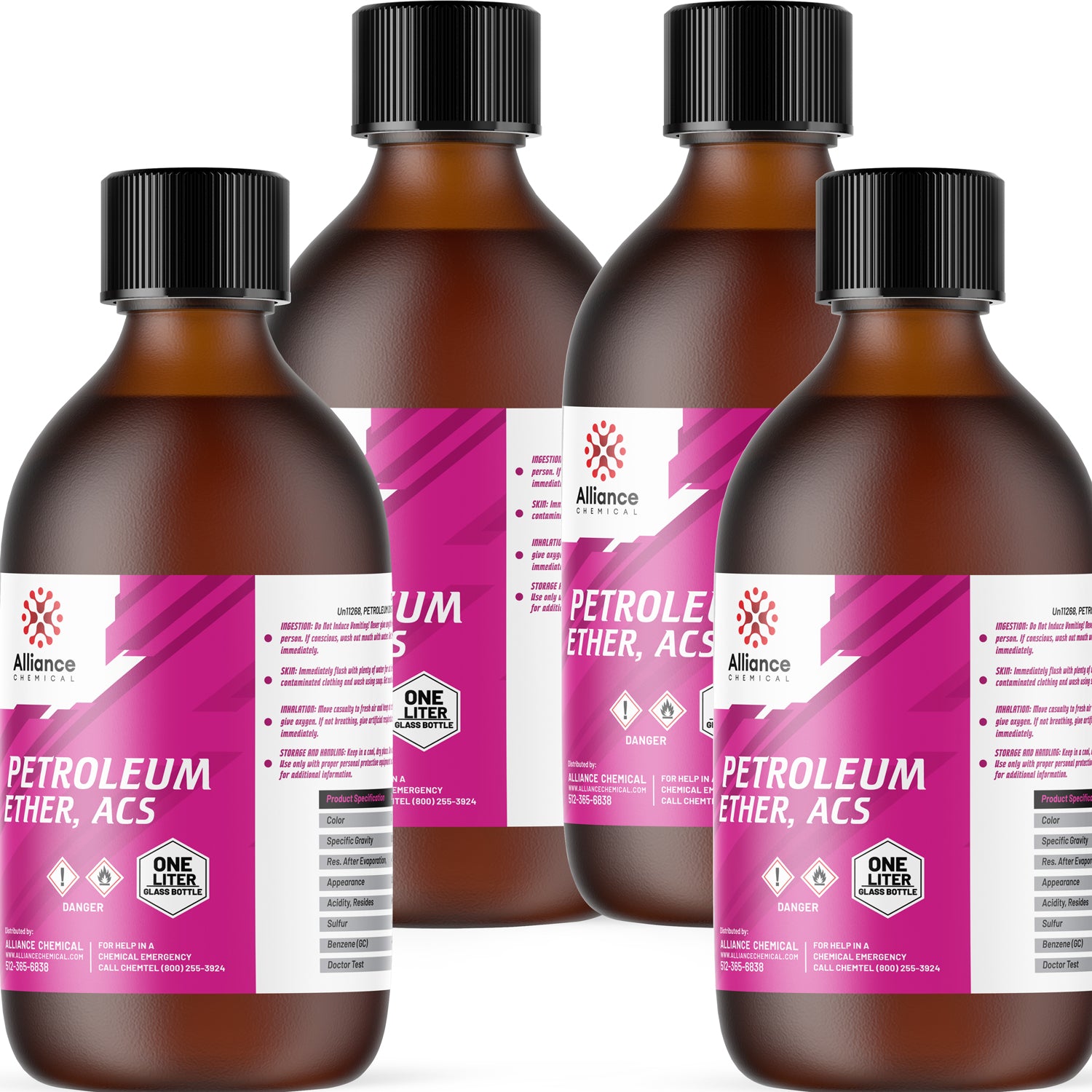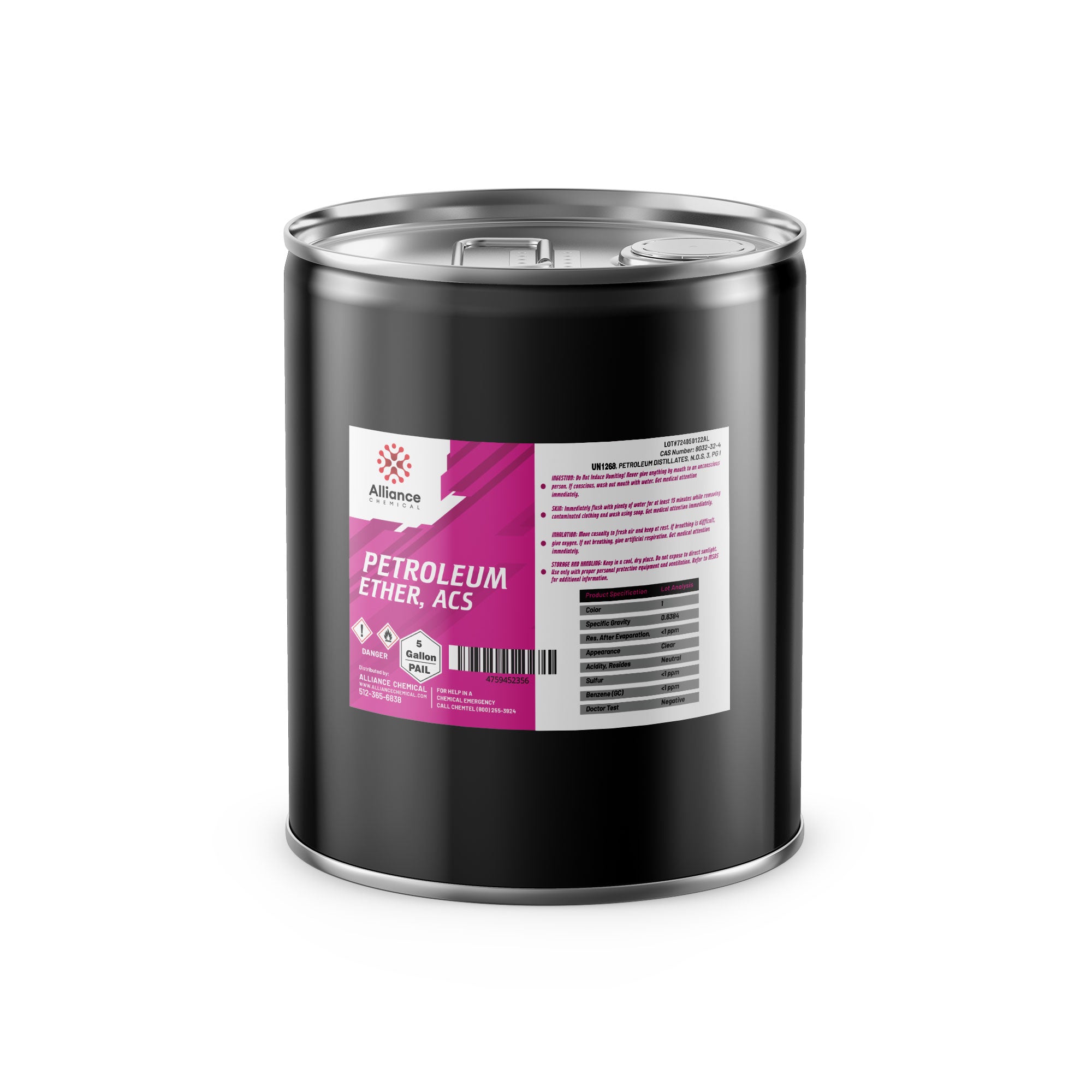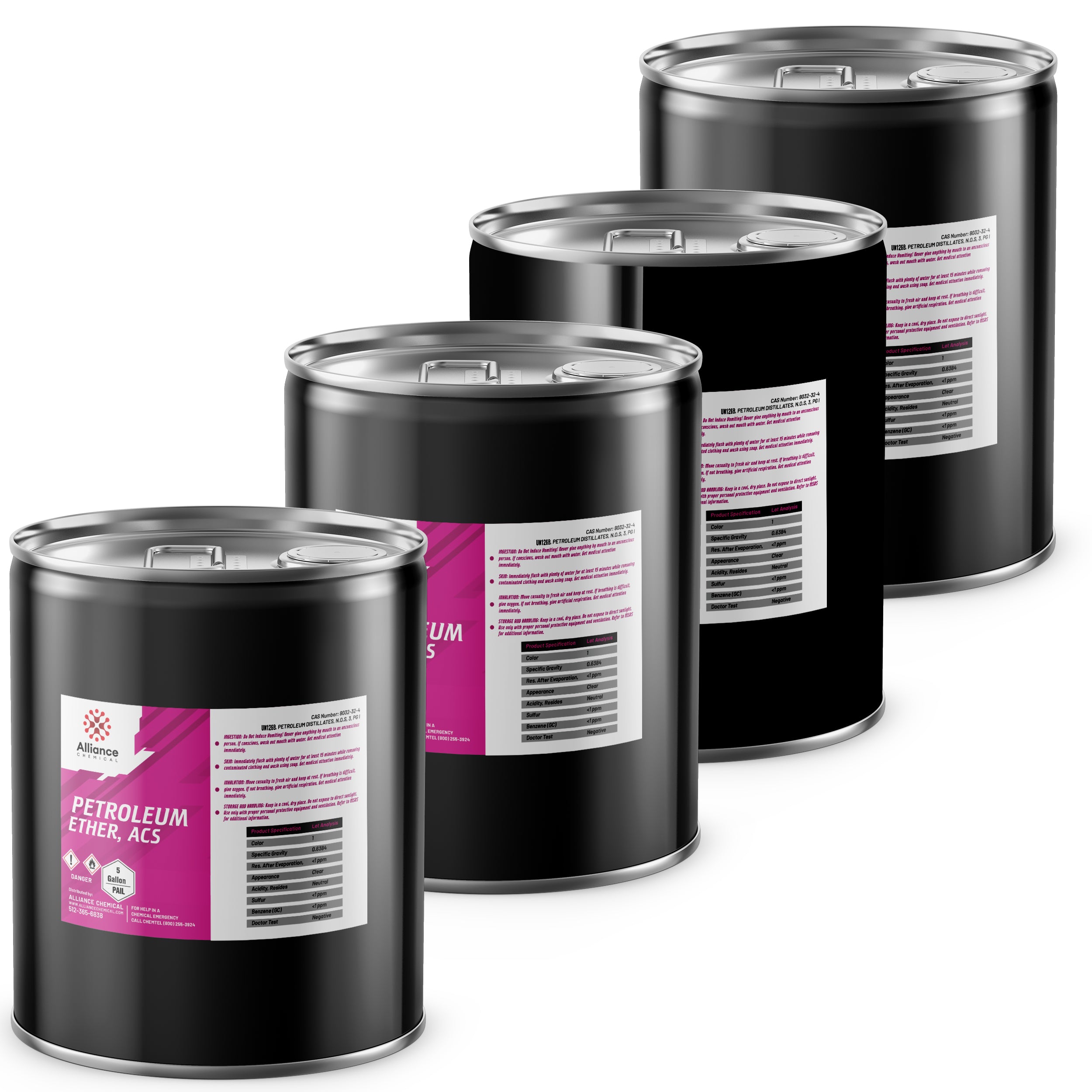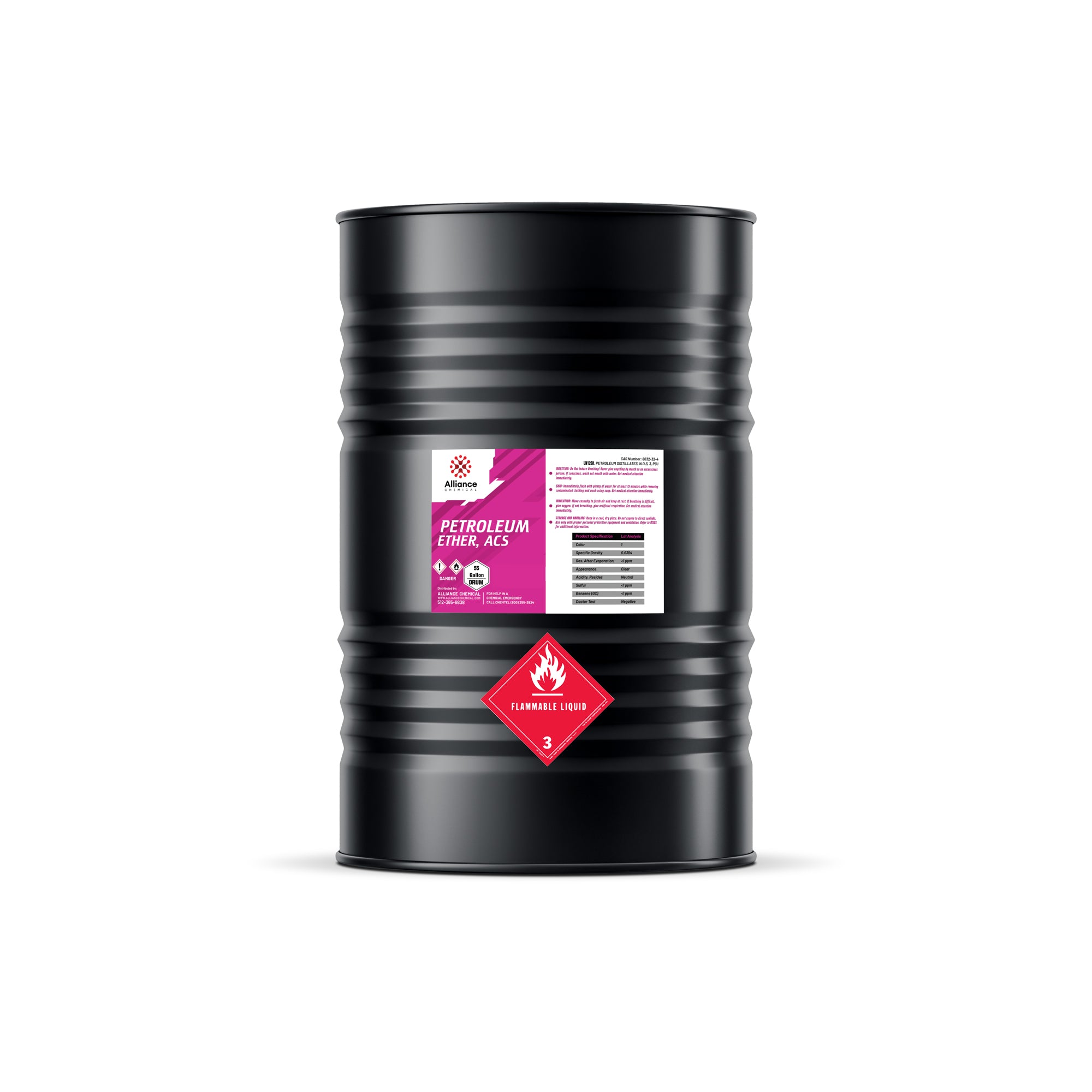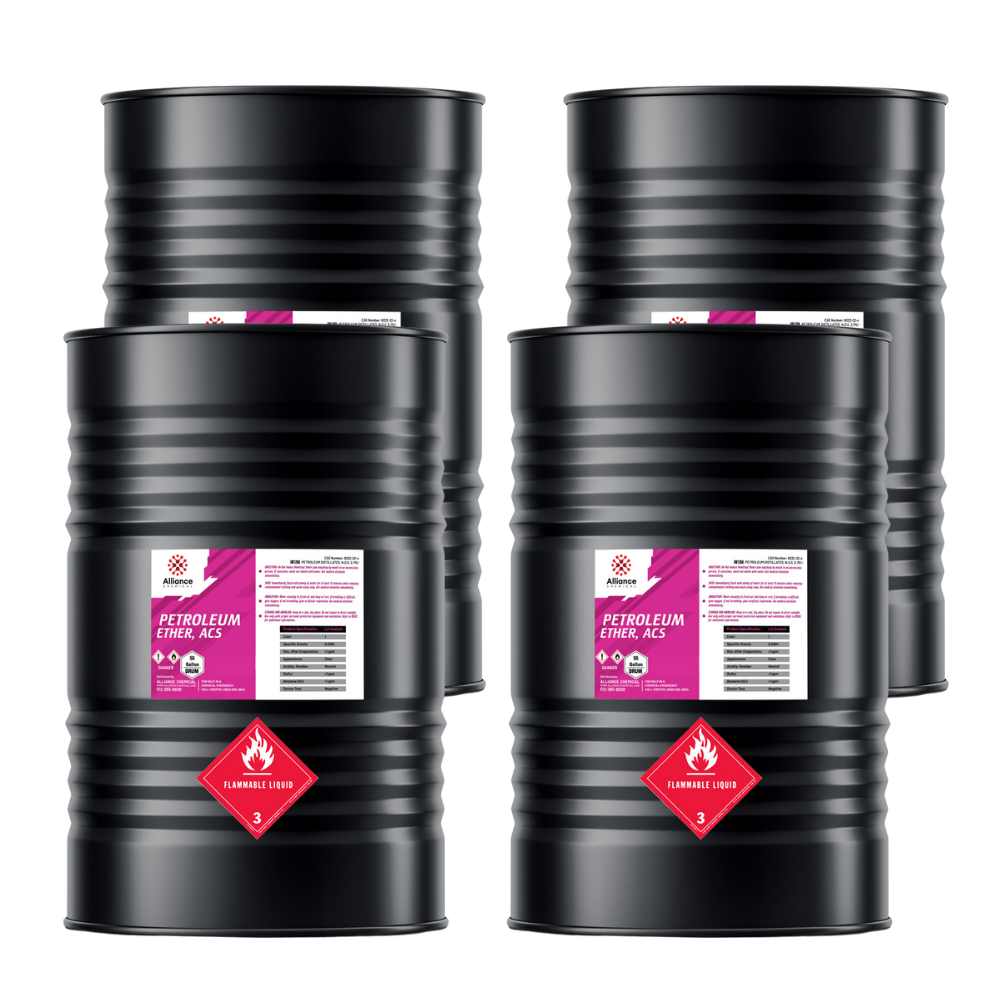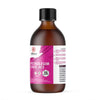Petroleum Ether ACS Reagent Grade
Category : Esters
$45.00
$190.00
76%
Off
Unit price
Quantity
Ask a question
Product Overview
Petroleum Ether ACS Reagent Grade, also known as Petroleum Spirit, is a highly refined, low-boiling hydrocarbon solvent predominantly composed of aliphatic hydrocarbons. This ACS-grade product is formulated to deliver low viscosity and high volatility, enabling rapid evaporation and compatibility with sensitive analytical workflows. With an assay reaching 99.0–100.5 wt% and a typical value of 99.8 wt%, the solvent provides consistent purity essential for trace-level analyses, GC separations, and meticulous solvent systems in instrumentation. The product is designed to meet ACS Reagent Grade expectations, ensuring reliable performance in demanding laboratory environments where precision and lot-to-lot reproducibility matter.
Its composition, coupled with controlled impurity limits, supports a broad range of analytical and preparative applications. The low color (APHA 3 typical) and low residue on ignition (0.0005–0.001% w/w typical) contribute to high-purity solvent performance, reducing potential interferences in chromatographic methods and spectroscopic measurements. Operators can rely on strict quality controls and validated test methods, including GC with FID/GC-MS confirmation for assay and ICP-MS/IC for trace metals, to verify product integrity prior to use. This product is suitable for applications requiring fast solvent exchange, minimal residue, and stable performance under standard laboratory conditions.
Key Properties
- Assay (wt %): 99.0–100.5 (typical 99.8) [Test Method: GC with FID/GC-MS; alternative titration not applicable for pure solvents]
- Color (APHA): ≤ 5 (typical 3) [Test Method: APHA/Hazen visual comparison]
- Molecular Weight: 70.0 g/mol
- Chemical Formula: Mixture of C6–C7 aliphatic hydrocarbons
- Boiling Point: Low-boiling hydrocarbon solvent (exact value varies by hydrocarbon composition)
- Specific Gravity at 20°C: 0.64–0.68 (typical 0.65) [Test Method: ASTM D4052 or pycnometer]
- Residue after Ignition (wt %): ≤ 0.001% (typical 0.0005%)
- Chloride (ppm): ≤ 5 (typical 1) [Test Method: IC or ICP-OES]
- Nitrate (ppm): ≤ 1 (typical 0.2) [Test Method: IC]
- Amm. (ppm NH4+): ≤ 0.5 (typical 0.1) [Test Method: IC or colorimetric]
- Sulfate (ppm): ≤ 2 (typical 0.5) [Test Method: IC]
- Phosphate (ppm): ≤ 2 (typical 0.5) [Test Method: IC]
- Arsenic (ppm as As): ≤ 0.1 (typical 0.02) [Test Method: ICP-MS or ICP-OES]
- Heavy Metals (Pb, ppm as Pb): ≤ 0.1 (typical 0.02) [Test Method: ICP-MS/ICP-OES]
- Iron (ppm): ≤ 0.2 (typical 0.05) [Test Method: ICP-OES/MS]
- Copper (ppm): ≤ 0.1 (typical 0.02) [Test Method: ICP-OES/MS]
- Manganese (ppm): ≤ 0.1 (typical 0.02) [Test Method: ICP-OES/MS]
- Nickel (ppm): ≤ 0.1 (typical 0.02) [Test Method: ICP-OES/MS]
- Lead (ppm): ≤ 0.1 (typical 0.02) [Test Method: ICP-OES/MS]
- Zinc (ppm): ≤ 0.5 (typical 0.1) [Test Method: ICP-OES/MS]
- Aluminum (ppm): ≤ 0.1 (typical 0.02) [Test Method: ICP-OES/MS]
- Chromium (ppm): ≤ 0.1 (typical 0.02) [Test Method: ICP-OES/MS]
- Cobalt (ppm): ≤ 0.1 (typical 0.02) [Test Method: ICP-OES/MS]
- Calcium (ppm): ≤ 5 (typical 1) [Test Method: ICP-OES/MS]
- Magnesium (ppm): ≤ 5 (typical 1) [Test Method: ICP-OES/MS]
- Potassium (ppm): ≤ 5 (typical 1) [Test Method: ICP-OES/MS]
- Sodium (ppm): ≤ 5 (typical 1) [Test Method: ICP-OES/MS]
- Vapor Pressure (mmHg at 20°C): 97 mmHg
- Vapor Density (relative to air): 2.0
- Viscosity (cP at 25°C): 0.4 cP
- Refractive Index (nD20°C): 1.375
- LogP (partition coefficient): ~3.0–4.0 (predicted for C6–C7 hydrocarbons)
- Decomposition Temperature: Not decomposing up to 180°C (thermal stability limited by flash point)
Common Applications
- HPLC Mobile Phase: Used as a volatile non-polar component in reversed-phase mobile phases for the separation of organic compounds.
- Extraction Solvent: Facilitates the isolation of active pharmaceutical ingredients from plant materials due to low polarity and rapid evaporation.
- Solvent for Reactions: Serves as a non-polar reaction medium in organic synthesis for certain hydrocarbon-soluble substrates.
- Cleaning Agent: Effective solvent for laboratory glassware and equipment cleaning due to rapid evaporation and low residue.
- Sample Preparation: Employed in preparation of samples for gas chromatography analysis, aiding solvent exchange and sample cleanup.
Safety Precautions
First safety paragraph: Handle and store under strict control in a cool, well-ventilated area away from heat sources. Use containers made of HDPE or glass; avoid exposure to light and moisture. Wear appropriate PPE, including chemical-resistant gloves and splash goggles, and ensure good ventilation or fume hood use. Grounding and bonding during transfer are recommended to prevent static ignition. Keep away from oxidizers and incompatible substances to minimize hazardous interactions. Follow ACS Reagent Grade handling practices and refer to the SDS for detailed instructions.
Second safety paragraph: The material is highly flammable (H225) and may cause eye irritation (H319); exposure can include dizziness or drowsiness (H336). In case of inhalation or exposure, move to fresh air and seek medical attention if symptoms persist. For eyes, rinse cautiously with water for several minutes; for skin, wash with soap and water. Do not induce vomiting if ingested; seek medical assistance. In transport, it is classified as UN 3295, Petroleum Distillates, Class 3, Packing Group II. In case of spill, evacuate the area and follow flammable liquid response procedures per institutional guidelines and local regulations.
Benefits
✔ High-purity ACS-grade – Ensures low impurity carryover and reproducible analytical results.
✔ Low residue and color – Minimizes chromatographic interferences and background signals.
✔ Fast evaporation and volatility – Supports rapid solvent removal and efficient sample processing.
✔ Comprehensive impurity control – Trace metal and anion limits align with stringent analytical requirements.
| Property | Value |
|---|---|
| Formula | C5-C6 Hydrocarbons |
| Flash Point | -18 |
| Solubility | Soluble in organic solvents, insoluble in water |
| Appearance | Clear, colorless liquid |
| Boiling Point | 35 °C |
Compare Products
| Price |
|---|
| SKU |
| Rating |
| Discount |
| Vendor |
| Tags |
| Weight |
| Stock |
| Short Description |

